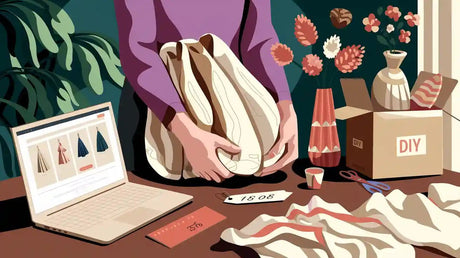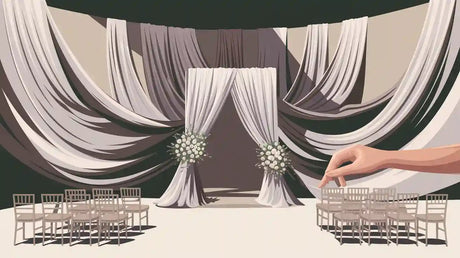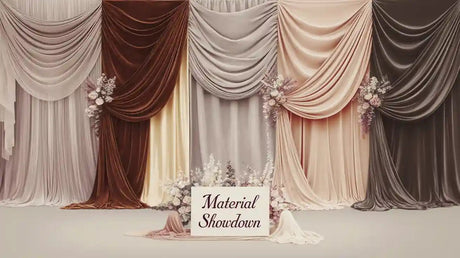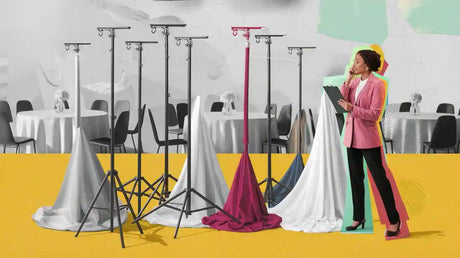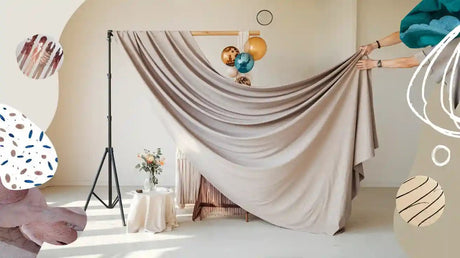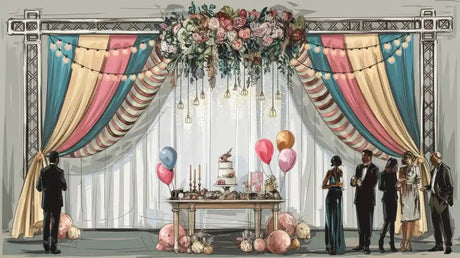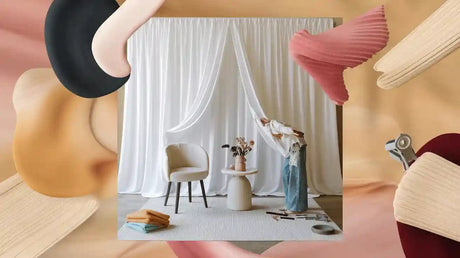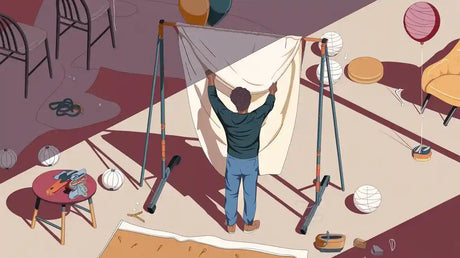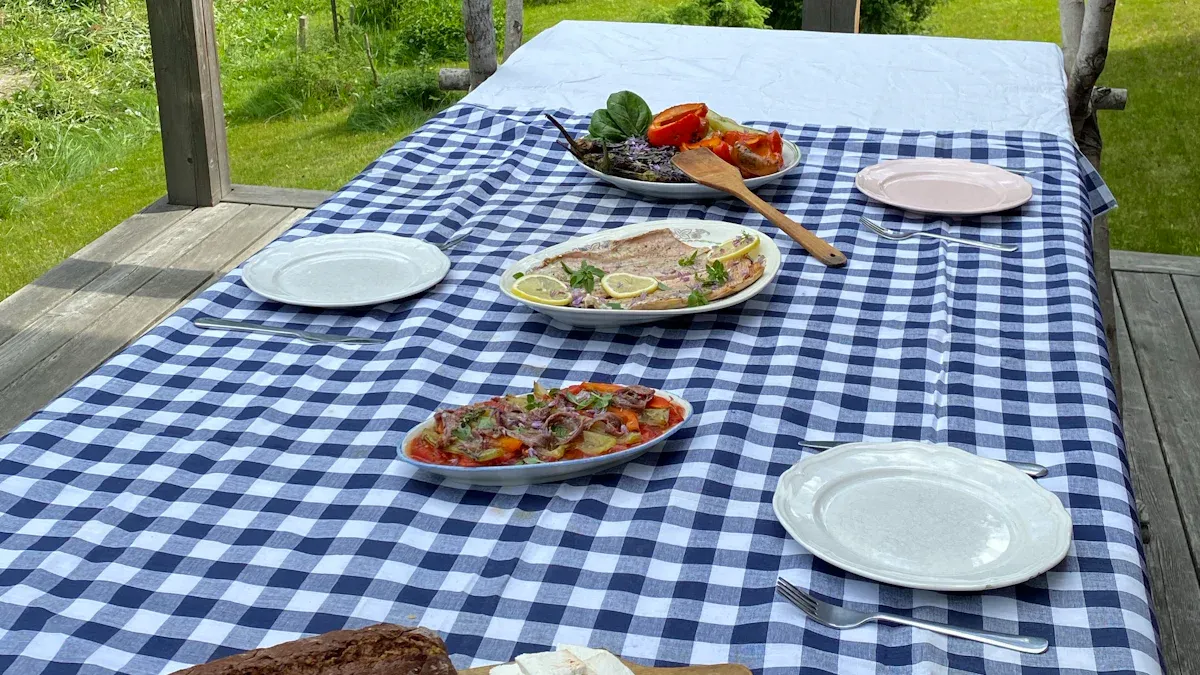
Finding the perfect rectangle tablecloth might seem challenging, but it’s easier than you think. A well-fitting rectangle tablecloth not only protects your table but also enhances its appearance. Start by measuring your rectangular table carefully to ensure the tablecloth fits properly with the ideal overhang. Whether you’re hosting a formal dinner or enjoying a casual meal, the right rectangle tablecloth makes all the difference. With so many options available, you’re sure to find a rectangle tablecloth that suits your style and elevates the look of your table.
Key Takeaways
Measure your table carefully to get the right size. Use a tape measure and include any table extensions.
Find the tablecloth size by adding twice the drop you want to both the table's length and width.
Pick the best material for your needs. Cotton is good for daily use, while satin and silk are better for fancy events.
Choose colors and designs that fit the event. Neutral colors are great for everyday meals, and bright patterns make special events fun.
Use weather-proof materials for outdoor parties. PVC and polyester last long and are easy to clean, perfect for picnics and barbecues.
How to Measure Your Table
Measuring the Length and Width
Using a Tape Measure for Accuracy
Start by using a tape measure to check your table’s size. Measure the length and width by placing the tape flat along the edges. For tables with rounded corners, measure at the widest points to cover the whole surface. Be precise because even small errors can make the tablecloth too short or long.
To find the right tablecloth size, it’s easy. Decide how much overhang, or "drop," you want. Add twice the drop to both the table’s length and width. For example, if your table is 36 inches wide and 72 inches long, and you want a 15-inch drop, the width becomes 66 inches, and the length becomes 102 inches. A 70" x 108" tablecloth would fit perfectly.
Measurement Aspect |
How to Calculate |
|---|---|
Width of Tablecloth |
Add two times the drop to the table’s width |
Length of Tablecloth |
Add two times the drop to the table’s length |
Example Calculation |
For a 6-foot table with a 15-inch drop: Width = 36 + 30 = 66 inches; Length = 72 + 30 = 102 inches |
Recommended Size |
A 70" x 108" tablecloth fits this table perfectly |
Accounting for Table Extensions
If your table has extensions, include them in your measurements. Fully extend the table before measuring. This ensures the tablecloth fits, whether for a big dinner or daily use. Always measure the table at its largest size to avoid problems later.
Avoiding Common Measuring Mistakes
Including Overhang in Measurements
A common mistake is forgetting to add the overhang. The overhang is the part of the cloth that hangs over the table’s edges. For casual settings, a 6- to 10-inch drop works well. For formal events, aim for a 15- to 20-inch drop. Always add twice the drop to both the length and width to get the right size.
Here’s an easy way to measure:
Decide how far the cloth should hang over the table.
Add two times the drop to the table’s width.
Add two times the drop to the table’s length.
Ensuring the Table Shape Matches the Tablecloth
Another mistake is picking a tablecloth that doesn’t match the table’s shape. For rectangular tables, always choose rectangular tablecloths. A mismatched shape can look odd and may not cover the table properly. Check your table’s shape before buying a tablecloth.
How to Calculate the Tablecloth Size
Understanding Tablecloth Drop
What Is a Drop and Why It Matters
The "drop" refers to how far the tablecloth hangs over the edges of your table. It’s not just about looks—it also affects comfort and functionality. A longer drop creates a formal, elegant vibe, while a shorter drop works better for casual settings. If the drop is too short, the tablecloth might look awkward. Too long, and it could get in the way of your guests’ legs.
Standard Drop Lengths for Casual and Formal Settings
For casual meals, a drop of 6 to 10 inches is ideal. It’s practical and keeps the tablecloth out of the way. For formal events, aim for a drop of 15 to 20 inches. This length adds a touch of sophistication and makes your table look polished.
Steps to Calculate the Size
Adding Drop Length to Table Dimensions
To calculate the tablecloth size, start by measuring your table’s length and width. Then, add twice the desired drop to each measurement. For example, if your rectangular table is 72 inches long and 36 inches wide, and you want a 15-inch drop, the math looks like this:
Width: 36 + (2 × 15) = 66 inches
Length: 72 + (2 × 15) = 102 inches
This means you’ll need a 70" x 108" tablecloth for a perfect fit.
Examples for Different Table Sizes
Here’s a quick guide to help you calculate the tablecloth size for various tables:
A 48-inch by 30-inch table with a 10-inch drop: Width = 30 + 20 = 50 inches; Length = 48 + 20 = 68 inches.
A 96-inch by 40-inch table with a 20-inch drop: Width = 40 + 40 = 80 inches; Length = 96 + 40 = 136 inches.
By following this method, you can ensure your tablecloth fits perfectly every time.
Choosing Between Standard and Custom Sizes
When to Choose Custom Tablecloths
Custom tablecloths are a great option if your table has unique dimensions or if you want a specific design. They’re especially useful for oversized tables or tables with unusual shapes. While they may cost more, they guarantee a perfect fit and can match your exact style preferences.
Benefits of Standard Sizes
Standard-sized tablecloths are more affordable and widely available. They work well for most rectangular tables and come in a variety of materials and designs. Plus, they’re easy to replace if needed. According to surveys, 45% of buyers prefer cotton tablecloths for their durability and ease of cleaning, while 30% opt for linen for its luxurious feel.
By understanding your needs and preferences, you can decide whether a standard or custom tablecloth is the right choice for you.
Picking the Best Material and Style
Common Materials for Rectangle Tablecloths
Cotton for Daily Use
Cotton tablecloths are great for everyday meals. They’re soft, eco-friendly, and feel natural. Cotton adds a cozy look to your table. However, it absorbs spills and can be harder to clean. For a stronger option, try cotton-linen blends. These are durable and still look stylish.
Satin and Silk for Fancy Events
Satin and silk tablecloths are perfect for formal dinners. They look shiny and elegant, making your table stand out. These fabrics need gentle care and don’t handle frequent washing well. For weddings or fancy parties, satin and silk create a classy vibe.
Polyester for All Occasions
Polyester tablecloths are tough and easy to clean. They don’t wrinkle and last through many washes. Studies show polyester stays strong after 200 washes. It works for both casual meals and formal events. If you want something practical and stylish, polyester is a great pick.
Choosing Colors and Patterns
Neutral Colors for Everyday Use
Colors like white, beige, and gray match any decor. They’re simple and work for most occasions. In the U.S., 63% of people prefer plain or soft patterns for dining. Neutral tones are a safe choice for regular use.
Bright Patterns for Special Days
Bold patterns make your table fun and festive. Floral prints are great for spring, while geometric designs suit modern events. In Europe, 72% of Italian families use decorative tablecloths for gatherings. Pick bold patterns to add excitement to special meals.
Useful Features
Stain-Resistant Fabrics
Stain-resistant tablecloths make cleaning up easier. Polyester and nylon often have finishes that resist stains. Vinyl is waterproof and simple to wipe clean, making it great for outdoor use.
Easy-to-Clean Choices
If you want low-maintenance options, go for polyester or vinyl. These materials are strong and simple to care for. Bamboo-cotton blends are another good choice. They’re soft, eco-friendly, and fight bacteria. Easy-to-clean tablecloths save time and effort for any meal.
Matching the Tablecloth to the Occasion
Everyday Use
Strong and Easy-to-Clean Choices
For daily meals, pick a tablecloth that handles messes well. Cotton-polyester blends are great because they’re soft and tough. They’re also simple to clean in the washing machine. About 68% of families like machine-washable tablecloths since they save time. If you care about the environment, try organic cotton or bamboo. These materials are eco-friendly and perfect for regular use.
Plain and Neutral Styles
Neutral tablecloths are best for everyday meals. Colors like white, gray, or beige match most home styles. They make your table look neat and welcoming without being too bold. Neutral colors also work with many types of plates and decorations. This makes it easy to keep your table looking nice for any meal.
Formal Events
Fancy Fabrics and Soft Patterns
For formal dinners or weddings, choose elegant fabrics like silk or satin. High-quality linen is another good option for a classy look. Soft patterns, like damask, add style without being too bright. A beautiful rectangle tablecloth can make your dining area look amazing for special events.
Matching Event Themes
Pick a tablecloth that fits the theme of your event. For spring weddings, pastel colors look lovely. Jewel tones, like emerald or ruby, are great for winter parties. Some people, about 15%, like custom tablecloths to match their event’s colors. This makes your event feel unique and well-planned.
Seasonal and Holiday Gatherings
Bright Colors and Fun Patterns
For seasonal meals, use tablecloths that match the holiday mood. In fall, warm colors like orange or burgundy feel cozy. During Christmas, patterns like snowflakes or holly make the table festive. You can also layer a linen tablecloth with a burlap runner for extra style.
Adding Seasonal Decorations
Your tablecloth can be the base for seasonal decorations. Add items like small pumpkins, pinecones, or dried flowers to match the season. Candles and name cards can make the table even more special. These small details create a warm and memorable atmosphere for your guests.
Outdoor Gatherings
Weather-Resistant Materials
For outdoor events, pick a tablecloth that handles weather well. Materials like PVC and polyester work great for this. PVC is strong and keeps water out, so it’s good for wet or humid days. Polyester protects against sunlight and doesn’t fade, staying bright even in the sun.
Here’s a simple comparison of these materials:
Material |
Features |
|---|---|
PVC |
Strong, water-resistant |
Polyester |
Sun protection, no fading |
People love these materials because they last long and are easy to clean. Reviews often mention how well they work outside. They’re also simple to wipe clean, which helps with spills or dirt. Whether it’s a picnic or barbecue, these tablecloths keep your table looking nice all day.
Lightweight and Portable Options
For outdoor fun, choose a tablecloth that’s easy to carry. Lightweight options like linen and polyester are perfect. Linen is airy and folds small, so it’s easy to pack for trips. Polyester is a bit heavier but doesn’t wrinkle and stays neat after folding.
Here are some tips for easy outdoor setups:
Pick a tablecloth that folds and stores easily.
Use wrinkle-free materials like polyester.
Try linen for its light and natural feel.
A lightweight tablecloth makes carrying and cleaning easier. You’ll spend less time setting up and more time enjoying the outdoors with friends and family.
Picking the right rectangle tablecloth is simple with a plan. First, measure your table carefully. Then, calculate the size you need. Choose a material and design that fits your style. A good tablecloth makes everyday meals or fancy events look great.
Did you know 60% of people buy tablecloths for seasonal decor? This shows how much they can change your home’s look. For restaurants, 73% of owners pick stain-resistant and washable tablecloths. This proves how useful they are for busy places.
By using these tips, you’ll make your dining table both useful and beautiful.
FAQ
How do I clean a tablecloth after eating?
Most tablecloths can go in the washing machine. Always check the care label first. For stains, clean them quickly with a stain remover. If the tablecloth is silk or delicate, hand wash or dry clean it.
Can I use a rectangle tablecloth on a round table?
It’s not the best choice. A rectangle tablecloth won’t hang evenly on a round table. This can make it look strange. To get the best look, match the tablecloth shape to your table.
What’s the best fabric for outdoor tablecloths?
Polyester and PVC are great options. They are strong, weatherproof, and simple to clean. Polyester doesn’t fade in sunlight, and PVC keeps water out. These are perfect for picnics or barbecues.
How do I store tablecloths without wrinkles?
Fold the tablecloth neatly and keep it in a dry spot. To avoid wrinkles, roll it on a cardboard tube or hang it on a soft hanger. Don’t stuff it into tight spaces to keep its shape.
Can I layer tablecloths for decoration?
Yes, layering looks stylish and adds depth to your table. Start with a plain tablecloth and add a smaller, patterned one on top. This works well for fancy dinners or holiday meals, making your table look extra special.

